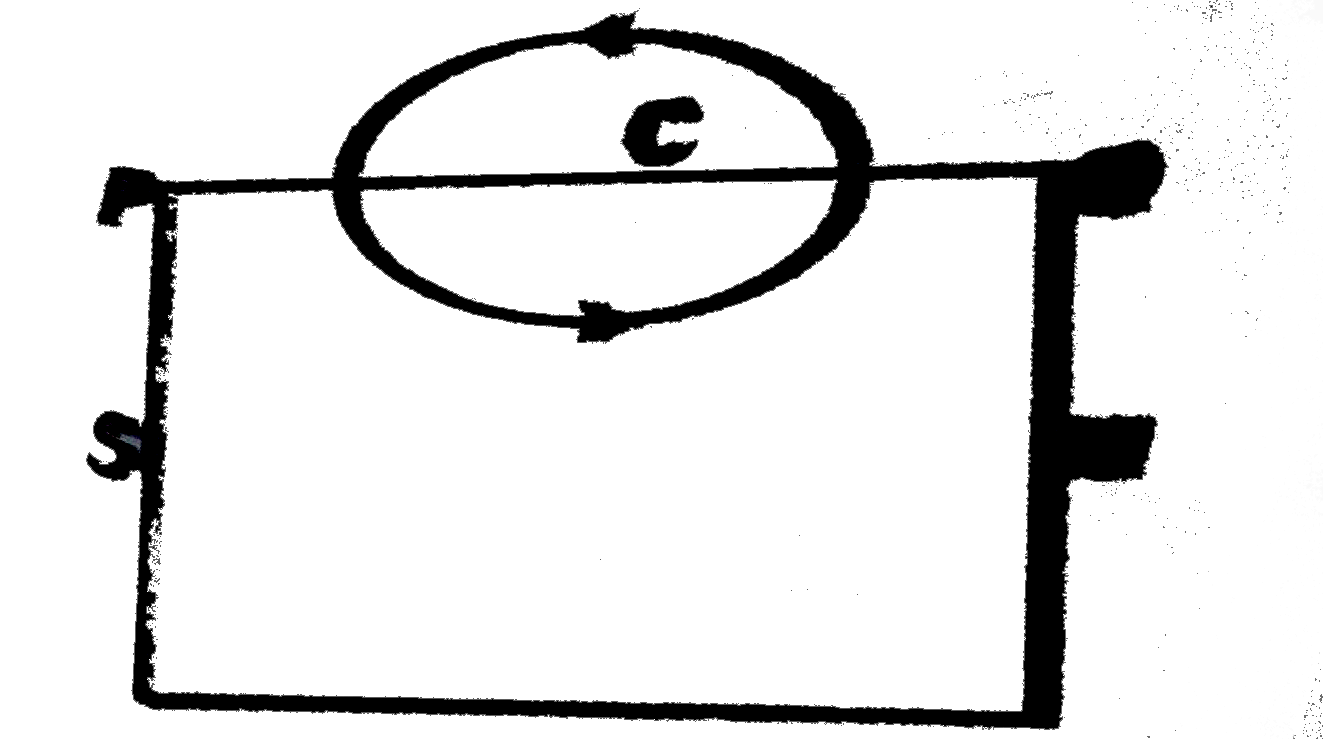Use i the Ampere's law for H and ii continuity of lines of B, to conclude that inside a bar magnet, (a) lines of H run from the N-pole to S-pole while (b) lies of B must run from the S-pole to N -pole.
Consider a magnetic field line of B through the bar magnet as given in the figure below.

The magnetic field line of B through the bar magnet must be a closed loop.
Let C be the amperian loop, then,
∫PQH.di=∫PQBmQdi
We know that the angle b etween B and Di is less than 90∘ inside the bar magnet so , it is positive.
i.e., ∫PQH.di=∫RQBμ0di>0
Hence, the lines of B must run from south pole (s) to north pole (N) inside the bar magnet.
According to Ampere's law,
∴∮Hdi=0
∴∮H.di=∫QPH.di+∫PQH.di=0
As ∫PQHdl>0, So ∫QPH.di<0
It will be so if angle between H and di is more than 90∘, so that cosθ negative it means the line of H must run from N-pole inside the b ar magnet.
Topper's Solved these Questions
- ELECTROSTATIC POTENTIAL AND CAPACITANCEBOOK - NCERT EXEMPLARCHAPTER - ELECTROSTATIC POTENTIAL AND CAPACITANCEEXERCISE - Electrostatic Potential And Capacitance
33 Videos
- MOVING CHARNGES AND MAGNETISMBOOK - NCERT EXEMPLARCHAPTER - MOVING CHARNGES AND MAGNETISMEXERCISE - Moving Charnges And Magnetism
29 Videos
Similar Questions
Use (i) the Ampere's law for →H and (ii) continuity of lines of →B , to conclude that inside a bar magnet, (a) lines of →H run from the N pole to S pole, while (b) lines of →B must run from the S pole to N pole
View SolutionBoth outside and inside a bar magnet, the magnetic field lines start from north pole and end at the south pole.
View Solution
Knowledge Check
Assertion: Magnetic moment is a vector quantity, whose direction inside the magnet is, from South to North.
Reason: Magnetic lines of force emanate from N-pole and enter into the S-pole.Aboth Assertion and Reason are true and the Reason is the correct explanation of the Assertion.Bboth Assertion and Reason are true but Reason is not a correct explanation of the Assertion.CAssertion is true but the Reason is false.Dboth Assertion and Reason are false.When the N-pole of a bar magnet points towards the south and S-pole towards the north, the null points are at the
Amagnetic axisBmagnetic centreCperpendicular divider of magnetic axisDN and S-poleWhen the N-pole of a bar magnet points towards the south and S-pole towards the north, the null points are at the
AMagnetic axisBMagnetic centreCPerpendicular divider of magnetic axisDN and S poles
PASSAGE-I : A magnetic field is described by drawing the magnetic field lines. The magnetic field lines always begin from the north pole of magnet and end on the soth pole of the magnet. They do not intersect each other. They come closer to one another near the poles but they are widely separated at other places.
The magnetic field lines
View SolutionMagnetic lines of force are directed from______pole to ____pole, in the magnetic field
View SolutionWhen the N-pole of a bar magnet points towards the south and S-pole towards the north, the null points are at the
View SolutionA neutral point is found on the prolongation of the axis of a bar magnet at a distance of 10 cm from the nearer pole. If the length of the bar be 10 cm and H=28Am−1, find the pole strength of the magnet.
View SolutionWhen S−pole of the given "bar" magnet is placed on a table pointing geographical N−pole
View Solution
